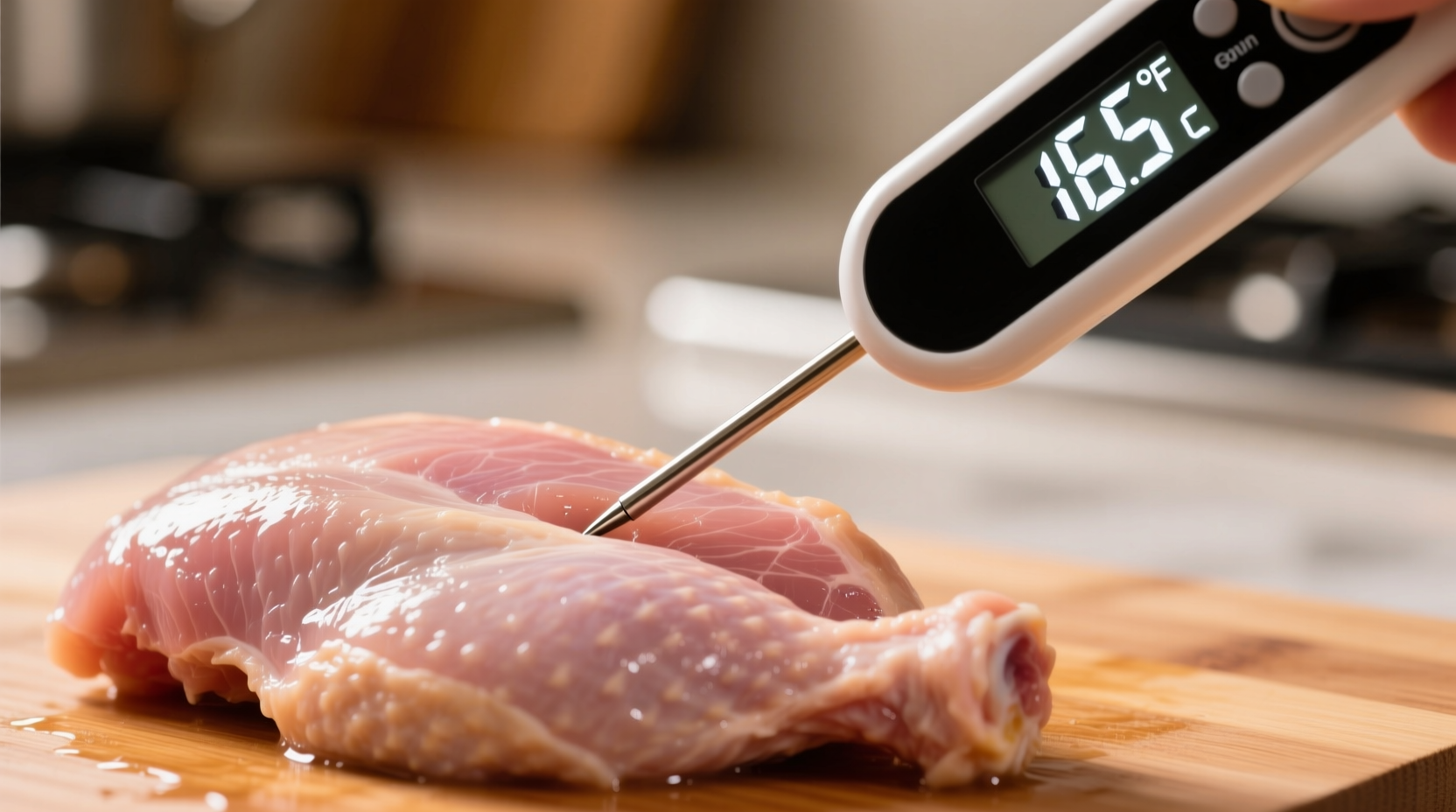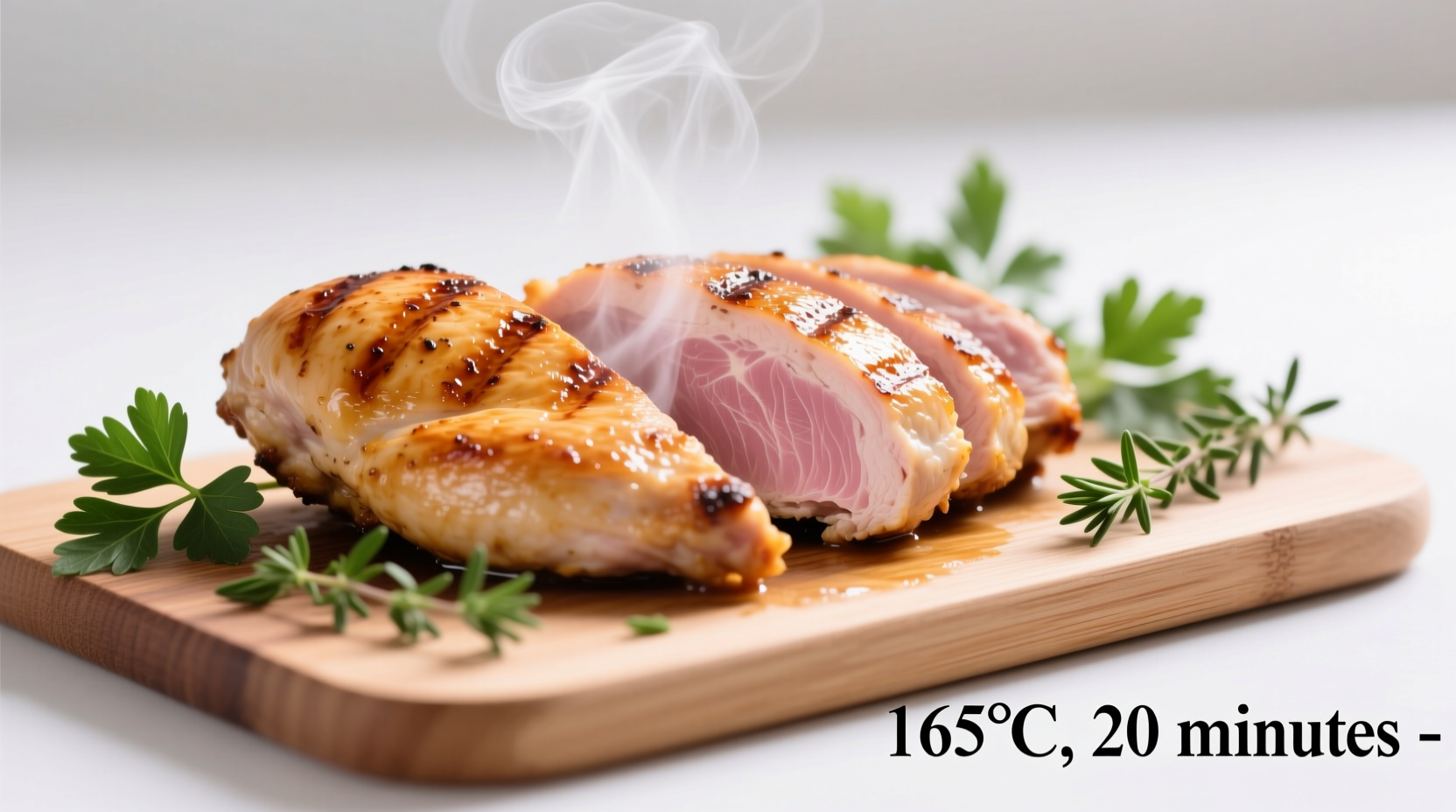Ever wonder why your perfectly golden chicken sometimes makes you question if it's truly safe to eat? You're not alone. Millions of home cooks rely on color or texture to judge chicken doneness, but these methods can't guarantee food safety. Let's explore exactly what temperature chicken needs to reach and why it matters for your health.
Why 165°F Is Non-Negotiable for Chicken Safety
Food safety isn't about guesswork—it's about science. When chicken reaches 165°F (73.9°C), it destroys dangerous pathogens that cause foodborne illnesses. According to the USDA Food Safety and Inspection Service, this temperature instantly eliminates Salmonella, Campylobacter, and other harmful bacteria that commonly contaminate poultry.
"Many people think clear juices mean chicken is done, but that's dangerously misleading," explains Antonio Rodriguez, culinary expert with professional kitchen experience. "Bacteria don't change color—they require specific heat exposure to be destroyed. Only a thermometer provides certainty."
| Temperature | Effect on Bacteria | USDA Recommendation |
|---|---|---|
| 145°F (63°C) | Salmonella begins to die but requires 9+ minutes | Not recommended |
| 155°F (68°C) | Salmonella dies in 50 seconds | Acceptable with precise timing |
| 160°F (71°C) | Salmonella dies in 14 seconds | Acceptable with precise timing |
| 165°F (74°C) | Instant bacterial destruction | Recommended standard |
How to Measure Chicken Temperature Correctly
Using a food thermometer properly is crucial. Here's the professional method:
- Choose the right thermometer—digital instant-read models provide fastest, most accurate results
- Insert at the thickest part of the meat, avoiding bone, fat, or gristle
- Check multiple spots in larger cuts like whole chickens or roasts
- Wait for stabilization—most digital thermometers take 10-15 seconds to give accurate reading
"I've seen countless home cooks insert thermometers incorrectly near bones or in thin areas," says Rodriguez. "This gives false readings that could make someone sick. Always target the meatiest section."

Common Misconceptions About Chicken Doneness
Let's debunk popular but dangerous myths:
- "Clear juices mean it's done"—Blood-colored juices don't indicate undercooking; they're myoglobin, a protein that remains red even in safe chicken
- "If it's white, it's safe"—Chicken can appear fully cooked at temperatures as low as 140°F while still harboring dangerous bacteria
- "Resting time cooks it more"—While temperature may rise 5-10°F during resting, this isn't sufficient to reach safe levels if initially undercooked
Temperature Guidelines for Different Chicken Cuts
While 165°F applies universally, different cuts require specific attention:
- Whole chicken—Check breast, thigh, and wing joint areas; temperature should be uniform throughout
- Boneless breasts—Measure at thickest part; these dry out quickly if overcooked past 165°F
- Thighs and drumsticks—Can be cooked to 170-175°F for more tender results without safety concerns
- Ground chicken—Requires 165°F throughout due to increased surface area where bacteria can thrive
The Centers for Disease Control and Prevention reports that undercooked poultry causes approximately 240,000 cases of foodborne illness annually in the United States. Proper temperature verification prevents these preventable illnesses.
What Happens If Chicken Isn't Cooked Properly
Consuming chicken below 165°F risks exposure to dangerous pathogens. Symptoms of Salmonella infection typically appear 6-48 hours after consumption and include:
- Severe abdominal cramps
- Nausea and vomiting
- Diarrhea (sometimes bloody)
- Fever and chills
For vulnerable populations—children, elderly, pregnant women, and immunocompromised individuals—these infections can lead to hospitalization or even death. The FDA Food Code specifically mandates 165°F for chicken in commercial food service for this critical safety reason.
Practical Tips for Perfectly Cooked Chicken Every Time
Follow these professional techniques to achieve safe, juicy chicken:
- Invest in a quality thermometer—Calibrate it monthly by testing in ice water (should read 32°F) and boiling water (212°F at sea level)
- Remove chicken at 160°F—Temperature will continue rising 5°F during resting
- Let it rest properly—3-5 minutes for breasts, 10-15 minutes for whole birds
- Sanitize your thermometer—Wipe with alcohol between measurements to prevent cross-contamination
"I teach my students to treat their thermometer like a kitchen essential, not an optional tool," Rodriguez emphasizes. "Just as you wouldn't bake without checking if your oven works, never cook chicken without verifying its temperature."
When Slightly Lower Temperatures Might Be Acceptable
While 165°F remains the gold standard, the USDA acknowledges that maintaining lower temperatures for specific durations also ensures safety:
- 150°F for 2.8 minutes
- 155°F for 47.7 seconds
- 160°F for 14.8 seconds
However, these precise time-temperature combinations require professional-grade equipment and monitoring that most home kitchens lack. For consistent safety without specialized tools, 165°F remains the practical recommendation for home cooks.
Final Safety Checklist Before Serving Chicken
- Verify thermometer is properly calibrated
- Check temperature in multiple locations
- Confirm reading has stabilized at 165°F
- Clean thermometer with hot, soapy water after use
- Wash hands thoroughly after handling raw poultry











 浙公网安备
33010002000092号
浙公网安备
33010002000092号 浙B2-20120091-4
浙B2-20120091-4